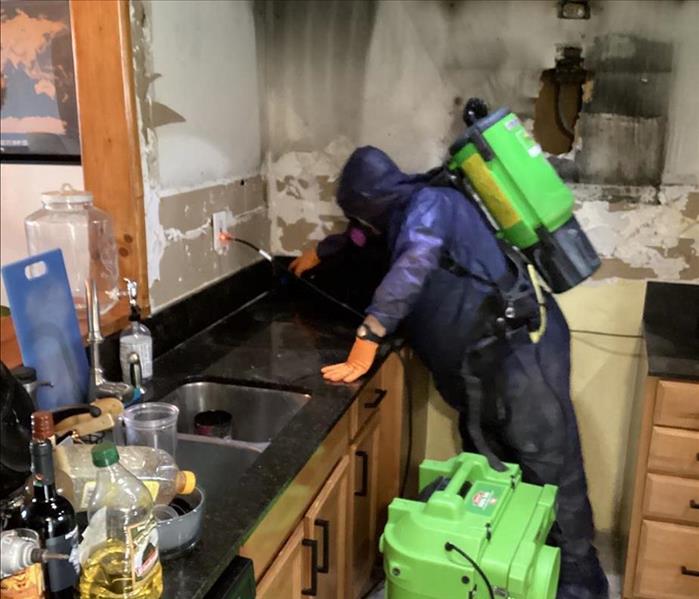Understanding Structural Damage After a Fire
6/21/2024 (Permalink)
 It’s important to work with professionals who understand the complexities of fire damage and can provide comprehensive assessments and repairs.
It’s important to work with professionals who understand the complexities of fire damage and can provide comprehensive assessments and repairs.
Experiencing a fire in your home or business is devastating. Beyond the immediate threat to safety and the destruction of your belongings, fires can cause significant structural damage to buildings. Understanding what constitutes structural damage after a fire is important for effective recovery and rebuilding. In this blog, we’ll explore what structural damage is, how to identify it, and why professional assessment is important.
What is Structural Damage?
Structural damage refers to any damage that affects the core integrity of a building. This includes the framework, foundation, and other load-bearing elements that are essential for the stability and safety of the structure. After a fire, structural damage can show up in various ways, compromising the safety and usability of the building.
Types of Structural Damage After a Fire
Foundation Damage
The foundation is critical to a building’s stability. Intense heat from a fire can cause the concrete in the foundation to crack or weaken. This damage might not be immediately visible but can lead to serious problems if not addressed promptly.
Wall and Frame Damage
The walls and frame of a building bear the load of the structure. Fire can weaken wooden frames and cause steel supports to warp. This can result in walls that are unstable and unsafe. According to the National Fire Protection Association (NFPA), structural damage is one of the primary reasons homes become uninhabitable after a fire.
Roof Damage
The roof is often the first part of a building to collapse during a fire due to the combination of heat and water from firefighting efforts. Roof damage can lead to water leaks and further damage to the structure’s integrity.
Smoke and Soot Damage
While not always immediately compromising structural integrity, smoke and soot can cause extensive damage to building materials. They can weaken materials over time and contribute to corrosion and decay.
Water Damage
Water used to extinguish the fire can also cause damage. It can weaken wooden structures, cause mold growth, and compromise the integrity of the building materials.
Identifying Structural Damage
- Visual Inspection
After ensuring it’s safe to enter, conduct a thorough visual inspection. Look for obvious signs like cracked foundations, warped frames, and sagging roofs. Burn marks and charred materials are clear indicators of damage.
- Professional Assessment
A professional structural engineer or building inspector should also assess the damage. They have the expertise to identify issues that might not be visible to the untrained eye. This is crucial for ensuring the building is safe to begin the mitigation and restoration process.
- Infrared Scanning
Infrared technology can help detect hidden damage by identifying any areas of heat retention that could indicate damaged structural elements. This is especially useful for finding water damage and hidden fire damage within walls.
Moving Forward
Dealing with structural damage after a fire can be overwhelming. It’s important to work with professionals who understand the complexities of fire damage and can provide comprehensive assessments and repairs. At SERVPRO of Weston/West Davie, we specialize in fire damage restoration, offering the expertise and resources needed to restore your property safely and efficiently.





 24/7 Emergency Service
24/7 Emergency Service